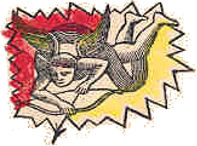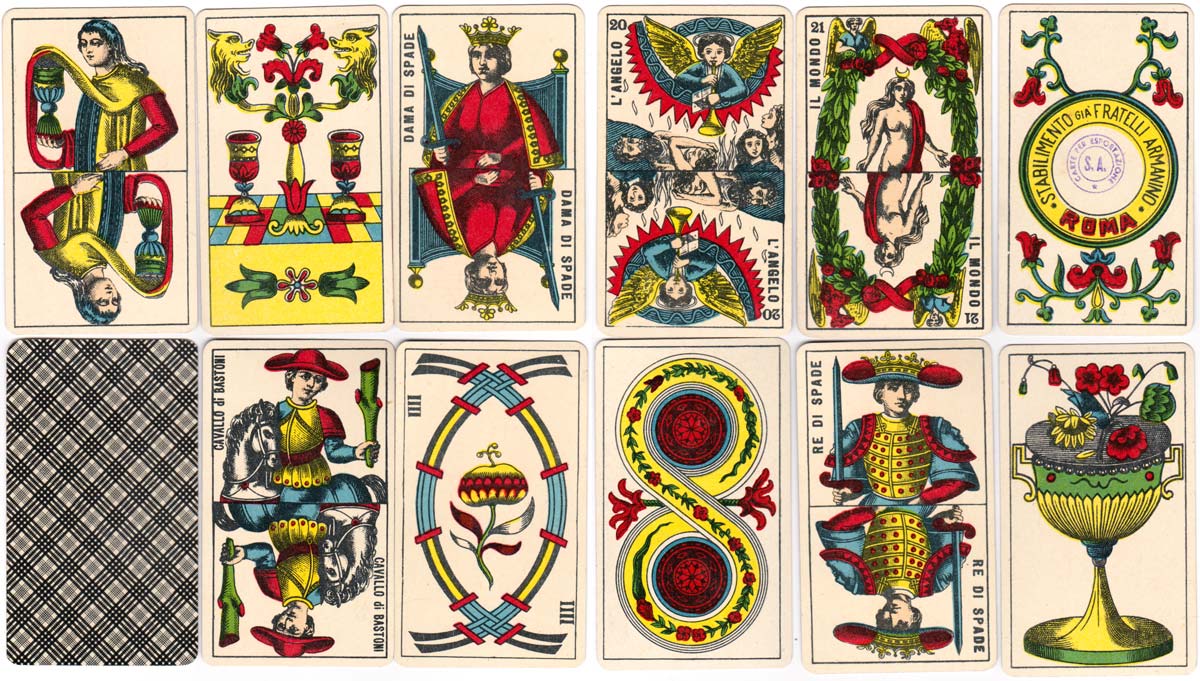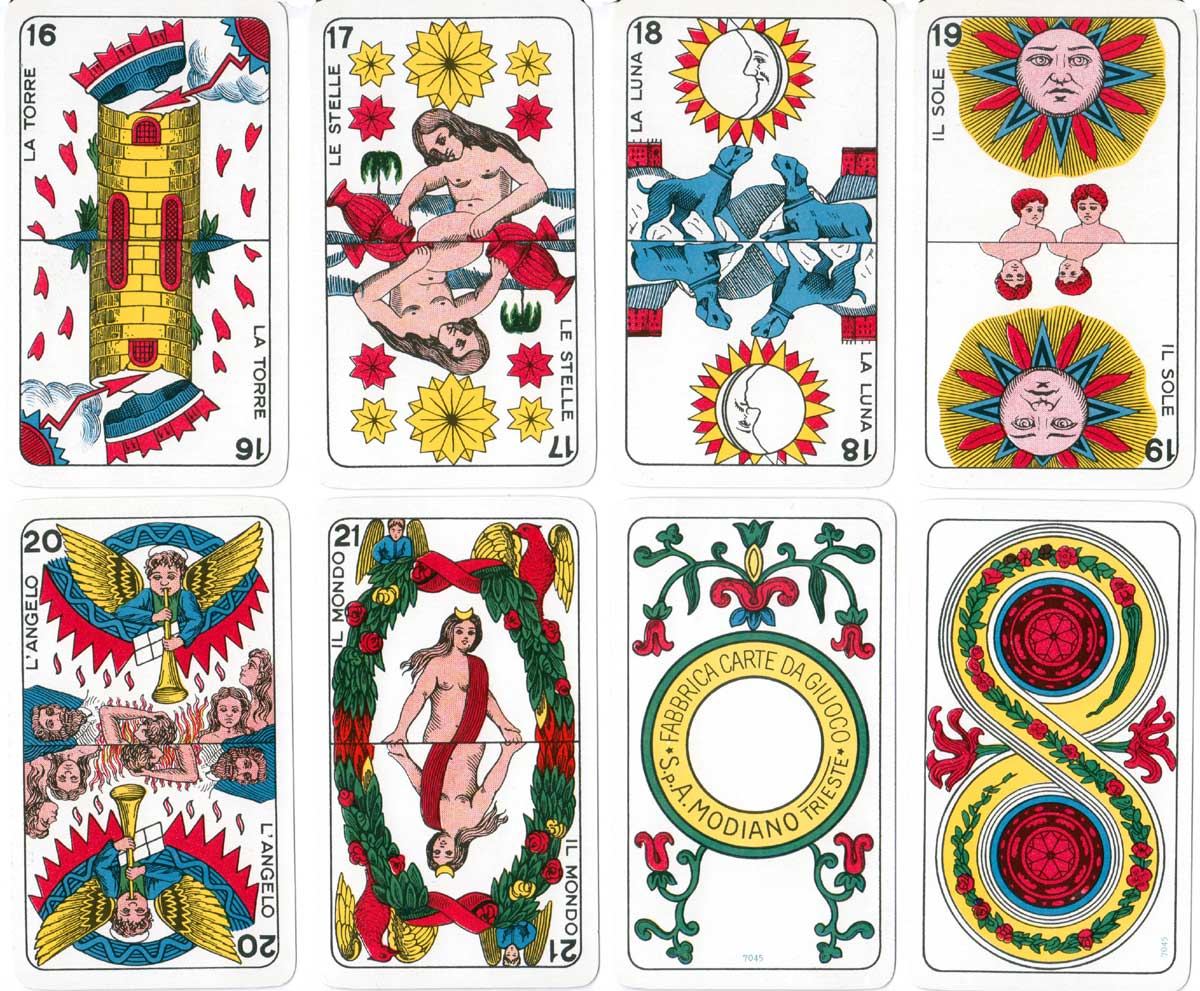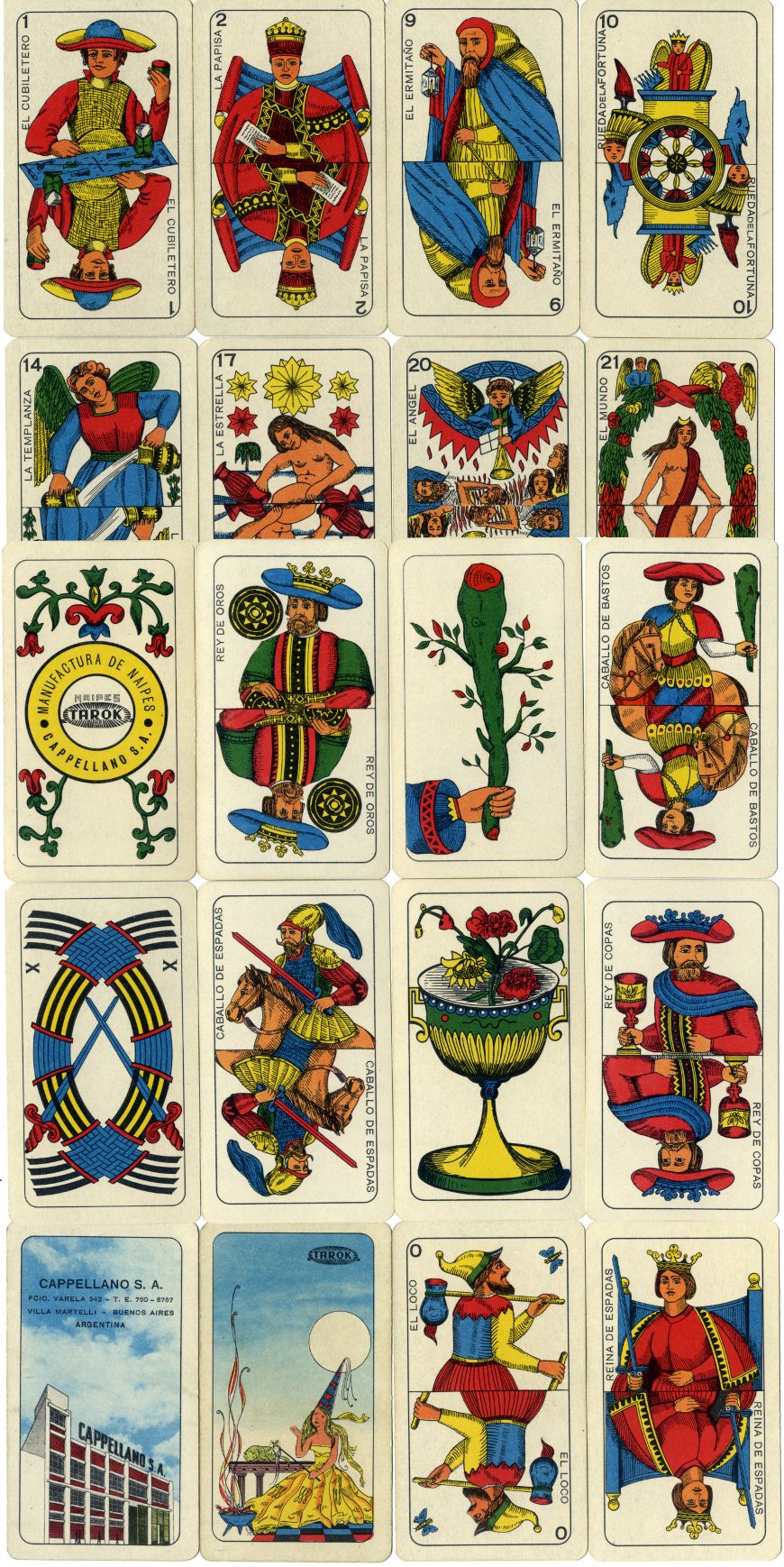Tarocco Piemontese | Piedmontese tarot
The double ended version of the Piedmontese Tarot evolved during the second half of the nineteenth century, most probably in Turin. It is still produced and used today.

TAROCCO PIEMONTESI double-ended version
Although it originally was a single-figured, or full-length design, the double ended version of the Piedmontese Tarot shown on this page evolved during the second half of the nineteenth century, most probably in Turin. It is still produced and used today. The usual format is with Italian inscriptions (instead of French) and Arabic numerals on the trumps. The manufacturer's details can be read on the ace of coins. In the top row this reads: “Viassone Alessandro, Torino, Fabbrica Via Nizza 104, Deposito Via Arsenale 4” and there are two duty stamps, one dated “13 Gen 85”.


Above: Tarocchi Piemontese manufactured by Viassone, Turin, 1885 & c.1920.

Above: Tarocchi Piemontesi manufactured by Armanino, Rome, c.1965. The Ace of Cups is a chalice containing flowers.

Above: Tarocchi Piemontesi manufactured by Modiano. Image courtesy Rex Pitts.
The 78-card Italian ‘Piedmontese’ Tarot has survived where other styles have become extinct and is used outside Italy.

Above: Naipes Tarok (Tarocco Piemontese) by Cappellano S.A., Bs Aires, c.1970. 78 + 2 cards. Further examples of Tarocco Piemontese manufactured in Argentina are shown here→

By Simon Wintle
Member since February 01, 1996
I am the founder of The World of Playing Cards (est. 1996), a website dedicated to the history, artistry and cultural significance of playing cards and tarot. Over the years I have researched various areas of the subject, acquired and traded collections and contributed as a committee member of the IPCS and graphics editor of The Playing-Card journal. Having lived in Chile, England, Wales, and now Spain, these experiences have shaped my work and passion for playing cards. Amongst my achievements is producing a limited-edition replica of a 17th-century English pack using woodblocks and stencils—a labour of love. Today, the World of Playing Cards is a global collaborative project, with my son Adam serving as the technical driving force behind its development. His innovative efforts have helped shape the site into the thriving hub it is today. You are warmly invited to become a contributor and share your enthusiasm.
Related Articles

Czech National Patterns by S.D. Modiano
Modiano produced cards with the Prague and Trappola patterns in the early 20th century.

Emilio Tadini playing cards
Beautiful dreamlike playing card designs by Emilio Tadini.

Austrian Tarock by S.D. Modiano
Modiano’s Austrian Tarock with country scenes has been in production for over 100 years.

Le carte da gioco Arcimboldo
Courts and suit-signs inspired by the works of the Italian Renaissance painter, Giuseppe Arcimboldo....

22 Pittori in 22 Arcani
Collaborative Tarot with contributions from 22 different Italian artists including Menegazzi and Tav...

Tarock Cards by NIL Spielkartenfabrik
A deck of tarock cards from the eastern end of the ending Austro-Hungarian Empire.

Justice playing cards
Ethical concepts in a deck produced by Riccardo Conturbia’s Passione Playing Cards Ltd.

Alan Tarot Deck
Reprint of a Tarock pack originally designed by Argio Orell for the Austrian Lloyd shipping company....

Il Tarocco del Mondo Nuovo
Imaginative Tarot card designs by Amerigo Folchi relating to Columbus and the New World.

22 Artisti Liguri in 22 Arcani
Collaborative set of major arcana devoted to Christopher Columbus and his voyages of discovery.

Carte di Colombo
Fully illustrated pack designed by Pier Canosa commemorating the 500th anniversary of the discovery ...

Carte di Natale
Designed by Pier Canosa as a Christmas pack for the Cortina Art Gallery in Milan.

Lyon pattern made in Italy by Pietro de Santi
The Lyon pattern was initially developed in France during the 16th century. As Lyon was a trading hu...

Laurenzo Propagine
Spanish-suited cards made in Italy by Laurenzo Propagine.

Il Tarocco Mitologico
Fully pictorial Tarot designed by Amerigo Folchi with figures mainly from Greek mythology.

Neapolitan pattern by Luigi Pignalosa, Naples
Two versions of the Neapolitan pattern from the British Museum by Luigi Pignalosa, Naples, 1875 & 18...
Most Popular
Our top articles from the past 28 days

